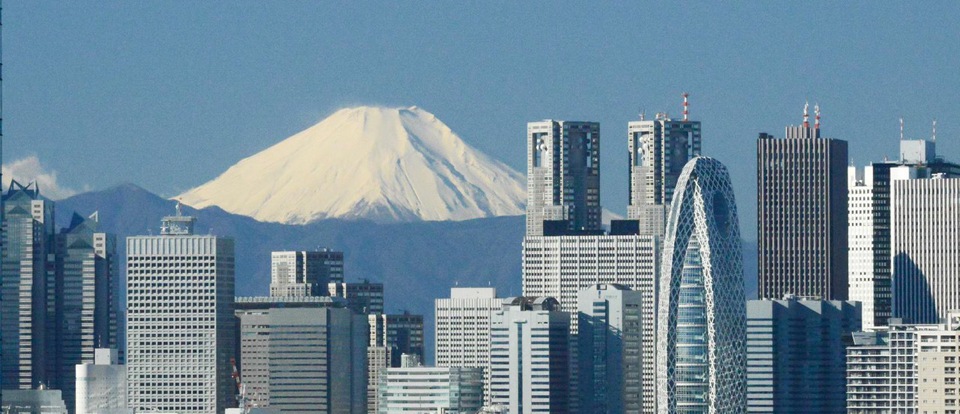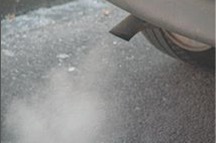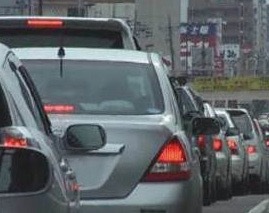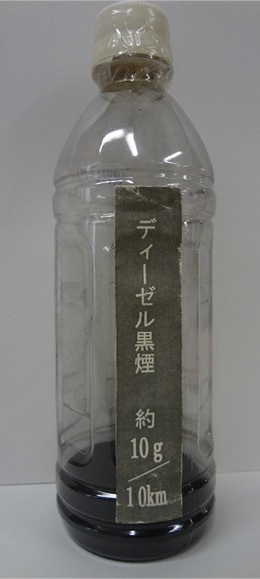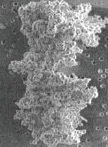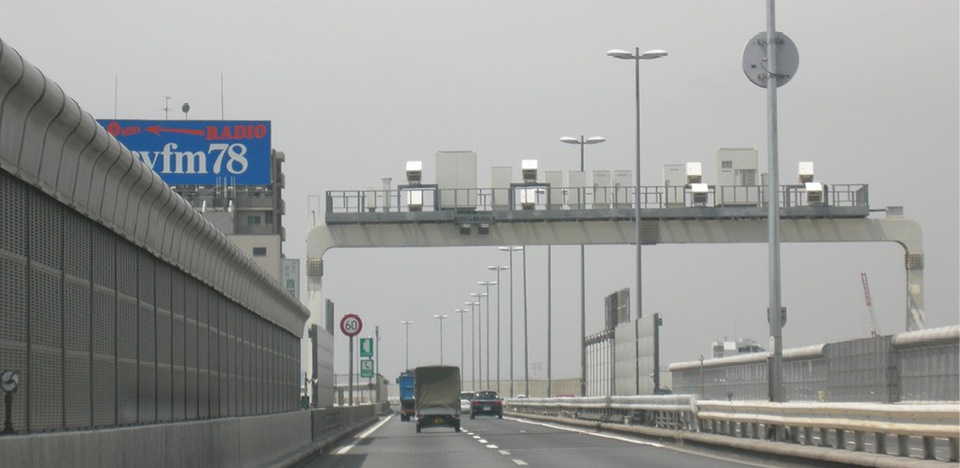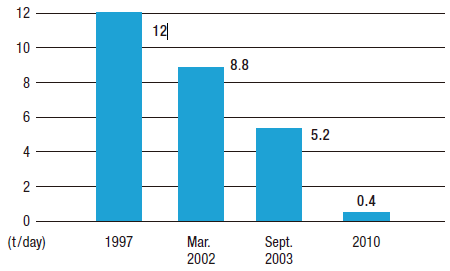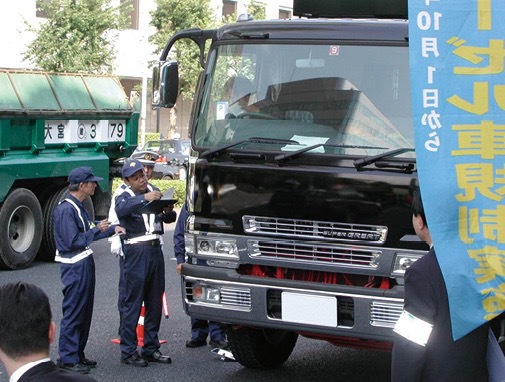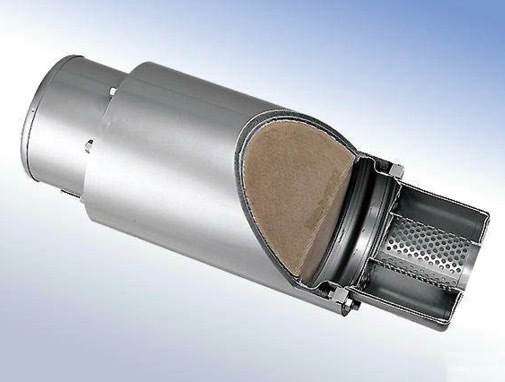On a clear day you can see the beautiful sight of Mount Fuji from Tokyo, more than 100 kilometers (62 miles) away. Last year the mountain was visible from central Tokyo on 138 days. But 50 years ago, because the air was severely polluted, it could be seen only about 20 days a year. The history of the development of Tokyo, with a population of over 13 million and clusters of many industries, is also a history of fighting against air pollution.
In the 1950s and 1960s, as the concentration of factories and offices in Tokyo supported high-paced economic growth, the burning of heavy oil gave rise to large amounts of sulfur dioxide (SO2). Tokyo Metropolitan Government (TMG) promoted a shift of fuels, encouraging factories and workshops to switch to low-sulfur heavy oil, electricity, or gas. This policy succeeded in dramatically reducing SO2, carbon monoxide, and other pollutants in the air, and in 1983 Tokyo cleared the general environmental standard for air quality.
However, Tokyo continued to be far from meeting the environmental standards for automobile exhausts, particularly the suspended particulate matter (SPM) emitted in large quantities by older diesel-powered vehicles. The metropolitan government responded to this situation with a sweeping move to banish such vehicles.
TMG started in 1999 with a campaign to familiarize residents with the facts.
Collecting the soot emitted by a diesel vehicle and displaying it in a clear bottle, the authorities provided visual backing for their message: “A diesel-powered car emits a gram of SPM for just a single kilometer [0.6 miles] traveled.” In this way they promoted a sense of crisis. In 2000, the metropolis adopted an Ordinance on Environmental Preservation, which set a strict standard for particulate matter (PM) emissions from diesel vehicles and prohibited vehicles not meeting it from driving in Tokyo. What was ground-breaking about this was that the standard applied not just to new vehicles but to ones already on the road. At the time there were more than 200,000 diesel vehicles in use; requiring them to meet the new standard entailed costs and efforts, but it meant that the results of the new ordinance would appear quickly and surely. The Tokyo Metropolitan Research Institute for Environmental Protection perfected a low-cost device for reduction of PM emissions and supplied it at a subsidized price; this provided further support for the metropolitan government’s undertaking.
Tokyo extended the reach of its efforts, teaming up with three neighboring prefectures to impose controls, and was able to implement a pioneering set of wide-area environmental measures unprecedented in the world. Additional far-reaching measures included the installation of surveillance cameras on the Metropolitan Expressway to catch violators and the deployment of automobile pollution inspection officers to enforce the standard.
Industry groups took note of TMG’s serious commitment and contributed to its efforts with moves of their own, such as quickly supplying low-sulfur diesel fuel and promoting the development, production, and sale of low-emission diesel vehicles.
Tokyo’s ordinance produced a dramatic improvement: As of 2002, the levels of SPM were above the environmental standard at all 34 of the monitoring stations within the metropolis, but in 2005, just two years after the ordinance went into effect, the standard was cleared at all 34. And Tokyo’s skies were blue again.
The move to control diesel emissions produced results across a wide area within a short time frame. The metropolitan government has been receiving an ongoing succession of requests from both within Japan and overseas, particularly from other Asian countries, to share the know-how behind this success. We urge anybody with an interest to visit the Tokyo Metropolitan Government Buildings. The view of Mount Fuji from the observatories 202 meters (about 660 feet) above ground is one of Tokyo’s treasures, recovered thanks to the efforts of many people.
Tomodachi Menu
- Top
- Previous Issues
- Topic
- Country/Region
Close

- Top
- Previous Issues
- Topic
- Country/Region
-
- Asia
-
- Pacific
-
- North America
-
- Latin America and the Caribbean
-
- Europe
-
- Middle East
-
- Africa
-
- Other Area
-
-
Tomodachi Summer 2015






























































































































